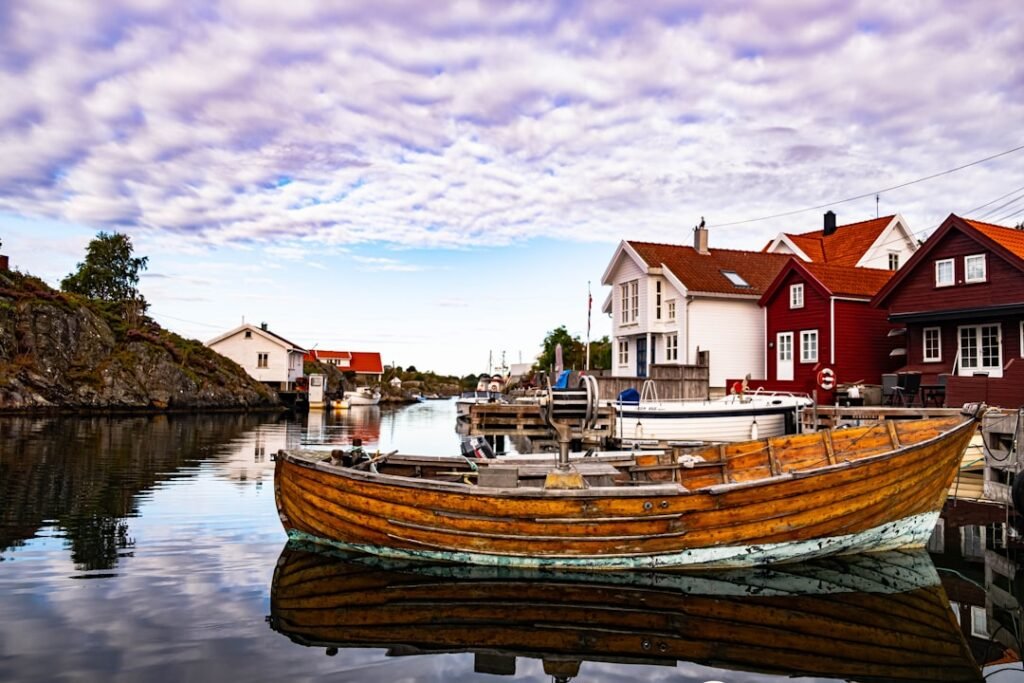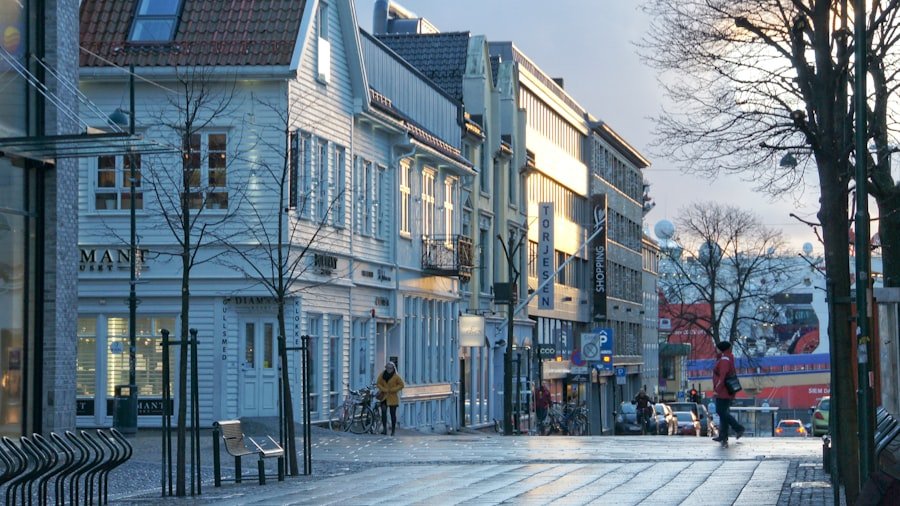

The Language of Norwegian Hospitality: For Hotel and Restaurant Staff
Norwegian hospitality is a unique blend of warmth, sincerity, and a deep-rooted respect for personal space. In a country where the natural landscape is as breathtaking as the culture itself, the way Norwegians welcome guests reflects their connection to both nature and community. The essence of hospitality in Norway is not merely about providing a service; it is about creating an experience that resonates with the values of openness and authenticity.
Whether you are visiting a quaint cabin in the fjords or a bustling city café, understanding the nuances of Norwegian hospitality can significantly enhance your experience. At its core, Norwegian hospitality is characterised by a genuine desire to make guests feel comfortable and valued. This is evident in the way locals engage with visitors, often going out of their way to ensure that everyone feels at home.
The emphasis on simplicity and honesty in interactions fosters an environment where guests can relax and enjoy their surroundings. As you delve deeper into the world of Norwegian hospitality, you will discover that it is not just about the physical space but also about the emotional connection that is established through language and cultural understanding. Speak Norwegian Confidently. Enroll at NLS Norwegian Language School.
Table of Contents
ToggleSummary
- Norwegian hospitality is known for its warmth and friendliness, making guests feel welcome and valued.
- Greeting guests in Norwegian shows respect and can help create a positive first impression.
- Polite phrases and courtesies, such as “takk” (thank you) and “vær så snill” (please), are important in Norwegian hospitality.
- Understanding cultural differences, such as personal space and communication styles, is crucial for providing excellent service to Norwegian guests.
- Handling complaints and requests with empathy and efficiency is key to maintaining customer satisfaction in Norwegian hospitality.
Greeting Guests in Norwegian
The first step in embracing Norwegian hospitality is mastering the art of greeting guests. A warm and friendly greeting sets the tone for any interaction, and in Norway, this is often done with a simple “Hei” or “Hallo.” These informal greetings are widely accepted and convey a sense of approachability. However, if you wish to add a touch of formality, especially in professional settings, “God dag” (Good day) is an appropriate choice.
Understanding these greetings not only helps in making a good impression but also shows respect for the local culture. In addition to verbal greetings, non-verbal communication plays a significant role in Norwegian interactions. A firm handshake accompanied by eye contact is customary when meeting someone for the first time.
This gesture signifies trust and sincerity, which are highly valued traits in Norwegian society. As you engage with locals, remember that a genuine smile can go a long way in establishing rapport. By combining verbal and non-verbal cues, you can create a welcoming atmosphere that embodies the spirit of Norwegian hospitality.
Polite Phrases and Courtesies

Politeness is an integral aspect of Norwegian culture, and using polite phrases can greatly enhance your interactions with locals. Simple expressions such as “Takk” (Thank you) and “Vær så snill” (Please) are essential in everyday conversations. These phrases not only demonstrate your appreciation but also reflect your willingness to engage respectfully with others.
Norwegians value directness, so being straightforward while maintaining politeness is key to effective communication. Moreover, incorporating phrases like “Unnskyld” (Excuse me) or “Beklager” (I’m sorry) can help navigate situations where you may need to interrupt or seek assistance. Such courtesies are appreciated and contribute to a positive atmosphere.
It is also worth noting that Norwegians often express gratitude for small gestures, so acknowledging even minor acts of kindness can strengthen your connections with them. By embracing these polite phrases and courtesies, you will find yourself better equipped to foster meaningful relationships within the context of Norwegian hospitality.
Understanding Cultural Differences
To fully appreciate Norwegian hospitality, it is crucial to understand the cultural differences that shape social interactions. Norway places a strong emphasis on egalitarianism, which means that people are generally treated as equals regardless of their social status or background. This cultural norm influences how hospitality is extended; for instance, it is common for hosts to encourage guests to help themselves rather than waiting to be served.
This approach fosters a sense of community and shared experience, making everyone feel included. Additionally, Norwegians value personal space and privacy. While they are friendly and welcoming, they may not engage in small talk as readily as people from other cultures might.
Understanding this aspect of Norwegian culture can help you navigate social situations more comfortably. Instead of overwhelming guests with excessive chatter, focus on meaningful conversations that allow for deeper connections. By recognising these cultural differences, you can adapt your approach to hospitality in a way that resonates with Norwegian values.
Handling Complaints and Requests
In any hospitality setting, handling complaints and requests effectively is paramount to ensuring guest satisfaction. In Norway, it is essential to approach such situations with empathy and understanding. When a guest expresses dissatisfaction, listening attentively and acknowledging their concerns demonstrates respect for their feelings.
A simple phrase like “Jeg forstår” (I understand) can go a long way in diffusing tension and showing that you are committed to resolving the issue. When addressing requests, it is important to be clear and concise in your communication. Norwegians appreciate straightforwardness, so providing direct answers or solutions will be well-received.
If you are unable to fulfil a request immediately, offering alternatives or explaining the situation transparently can help manage expectations. By approaching complaints and requests with a solution-oriented mindset, you will not only enhance the guest experience but also embody the principles of Norwegian hospitality.
Norwegian Dining Etiquette

Dining in Norway is often seen as an opportunity to connect with others, making it an essential aspect of hospitality. Understanding dining etiquette can significantly enhance your experience when invited to share a meal with locals. One key aspect of Norwegian dining culture is punctuality; arriving on time is considered respectful and shows appreciation for your host’s efforts.
When it comes to table manners, Norwegians typically keep their hands on the table during meals but do not rest their elbows on it. It is also customary to wait for everyone to be served before starting to eat; this practice reflects the value placed on togetherness during meals. Additionally, saying “Vel bekomme” (Enjoy your meal) before diving into the food is a common courtesy that adds warmth to the dining experience.
By adhering to these dining etiquettes, you will not only show respect for local customs but also create an inviting atmosphere that embodies the spirit of Norwegian hospitality.
Offering Recommendations and Suggestions
As part of providing excellent hospitality, offering recommendations and suggestions can greatly enhance a guest’s experience in Norway. Whether it involves suggesting local attractions, restaurants, or activities, sharing your insights demonstrates your commitment to ensuring that guests have a memorable time. When making recommendations, it is helpful to consider the preferences and interests of your guests; this personalised approach makes them feel valued and understood.
In addition to verbal recommendations, providing written materials such as brochures or maps can be beneficial for guests who may want to explore independently. Highlighting hidden gems or lesser-known spots can add an element of excitement to their visit while showcasing your knowledge of the local area. By taking the time to offer thoughtful suggestions, you contribute to creating an enriching experience that reflects the essence of Norwegian hospitality.
Communicating Special Offers and Promotions
In the realm of hospitality, effectively communicating special offers and promotions can attract guests and enhance their overall experience. In Norway, transparency is key; clearly outlining what each offer entails ensures that guests feel informed and valued. Whether it’s a seasonal discount or a special package deal, presenting this information in an engaging manner can pique interest and encourage bookings.
Utilising various communication channels—such as social media, email newsletters, or in-person interactions—can help spread the word about special offers effectively. Additionally, incorporating local language phrases when promoting these deals can create a more personal touch that resonates with potential guests. By being proactive in communicating special offers and promotions, you not only drive engagement but also embody the welcoming spirit of Norwegian hospitality.
Dealing with Language Barriers
In a multicultural environment like Norway, language barriers may occasionally arise when interacting with guests from diverse backgrounds. However, Norwegians are generally proficient in English, which facilitates communication for many visitors. Nevertheless, being mindful of potential language barriers can enhance the overall experience for everyone involved.
When faced with language challenges, patience and clarity are essential. Speaking slowly and using simple vocabulary can help bridge communication gaps effectively. Additionally, employing visual aids or gestures can further clarify your message when necessary.
If possible, learning a few basic phrases in Norwegian can also demonstrate your willingness to connect with guests on a deeper level. By approaching language barriers with understanding and creativity, you contribute positively to the atmosphere of hospitality.
Expressing Gratitude and Farewells
Expressing gratitude is an integral part of Norwegian hospitality that reinforces connections between hosts and guests. A heartfelt “Takk for maten” (Thank you for the food) after a meal or “Takk for besøket” (Thank you for the visit) when parting ways conveys appreciation for shared experiences. These expressions not only reflect good manners but also foster goodwill between individuals.
When bidding farewell, using phrases like “Ha det bra” (Goodbye) or “Vi sees” (See you) adds warmth to your departure. In some cases, offering a small token of appreciation—such as a handwritten note or a local souvenir—can leave a lasting impression on your hosts or guests. By embracing these expressions of gratitude and farewells, you contribute to creating an atmosphere of kindness that embodies the essence of Norwegian hospitality.
Embracing the Language of Norwegian Hospitality
In conclusion, embracing the language of Norwegian hospitality involves understanding cultural nuances, mastering polite phrases, and fostering genuine connections with others. From greeting guests warmly to navigating dining etiquette and handling requests gracefully, each aspect contributes to creating memorable experiences for both hosts and visitors alike. By recognising the importance of communication—whether verbal or non-verbal—you can enhance interactions that reflect the values inherent in Norwegian culture.
As you immerse yourself in this rich tapestry of hospitality, remember that every encounter presents an opportunity for connection and understanding. By embodying the principles of warmth, respect, and authenticity that define Norwegian hospitality, you not only enrich your own experiences but also contribute positively to the broader community around you. Ultimately, embracing this language goes beyond mere words; it becomes a heartfelt expression of kindness that resonates deeply within Norway’s vibrant culture.
Enroll in Norwegian Classes at NLS Norwegian Language School
If you want to learn Norwegian, you can register for classes here. We look forward to hearing from you and helping you become fluent in Norwegian.





